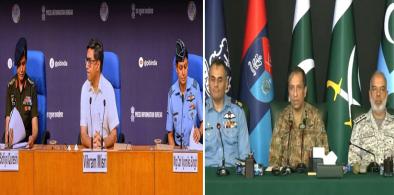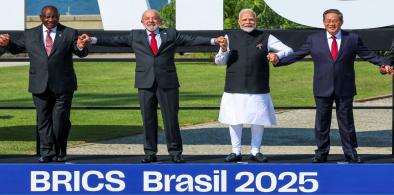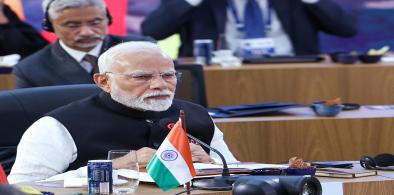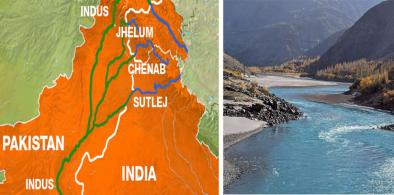A year after Galwan clash: India's stress on military modernization, strategic partnerships to counter China
India needs to deter China through a combination of its military prowess, discerning diplomatic action, and devising ways to become economically self-reliant with investment partnerships and collaborations with like-minded nations, writes Indu Saxena for South Asia Monitor

The Galwan clash was the biggest military confrontation between India and China in over five decades that has seen China continue with its bellicosity towards India. Historically, from Hindi-Chini Bhai-Bhai to summit between Indian Prime Minister Narendra Modi and his Chinese counterpart Xi Jinping in 2019, the latest border clash is a testimony to China's double-crossing and aggressive behavior in the region. In such a scenario it would be pertinent to put the lens on India's strategy and preparedness in the event of any fresh face-off with China
The Galwan Valley is of strategic importance for both India and China. Due to its sharp ridgelines, it gives a strategic boost over the valley area. India has been trying to build a 255-km strategically significant feeder road here from Darbuk-Shyok village to Daulat Beg Oldi road, close to Line of Actual Control. It would be a crucial point of communication and linkage from Leh to Aksai Chin.
Galwan Valley was the historic flashpoint of the India-China war in 1962. China’s Highway G219, a road between Tibet to Xinxiang, passes through Aksai Chin, the territory of India annexed by China and claimed by India. China wants to strengthen its position strategically and militarily by controlling the ridgeline area through the heavy deployment of its military infrastructure.
Last year’s skirmishes on the Line of Actual Control (LAC) between Indian and Chinese troops cost the lives of 20 Indian soldiers and an unknown number of casualties on the Chinese side.
It is implied that post-Galwan clash, India is planning and preparing more robustly to counter every future Chinese action. India’s readiness and preparedness is reflected in the equipping of forces and an eagerness in developing strategic and defense partnership with like-minded countries.
Military modernization
The disengagement between India and China after the nine-month-long stand-off might have eased off the situation at LAC, but the tension has not been de-escalated. India and China still have conflicting views and friction points and the threat from China "has not gone away altogether", to quote Indian Army Chief General M.M. Narvane.
In a recent interview, General Narvane stated: “Our forces are ready to thwart any unusual activity on part of our neighbor... Things are stable and under control as of now... We, of course, cannot be complacent.”
Now it seems that the LAC is going to be another Line of Control (de facto ceasefire line between India and Pakistan), with permanent military deployment due to China’s unpredictable behavior. India’s military modernization is crucial. Since 2019, India has laid huge stress on technological advancements in defense, communications, cybertechnology, UMVs for better interoperability and precise response.
According to Defence Minister Rajnath Singh, the Indian government plans to spend USD 130 billion in the next seven-eight years on defense modernization. India recently has signed a USD 200 million lease contract for Israeli drones for strengthening the long-range surveillance operations of the Indian Army along the LAC in the India-China border areas. India is also planning to procure 30 multi-mission armed predator drones costing USD 3 billion from the US for the army, navy and air force. These predator drones can stay airborne for around 35 hours and can be used for targeting both land and sea.
At a time when India was struggling to overcome a devastating second wave of the Covid 19 pandemic and its economy has shown a substantial decrease in GDP by 7.3 percent for 2020-2021, It is a big challenge for the country to allocate huge sums of money for military modernization. However, it is also a fact that India needs to spend a promising share on the military to pose a credible deterrence to China’s hugely expanding and advanced military.
Strategic partnership and Quad
India’s interest in forging defense and strategic partnership with other countries and the importance it attaches to the Quadrilateral alliance with the US, Australia and Japan signifies a serious state of preparedness to counter China’s next aggressive move. Leaders of the Quad have already expressed their concern on China’s economic and geopolitical coercion regionally and globally, and extended their support to India for China’s LAC incursions.
In fact, each of the Quad countries has faced strain in its diplomatic relations with China. For example, the US-China trade war is at its peak since the tenure of former US President Donald Trump. Recently, incumbent President Joe Biden signed an executive order expanding a Trump-era ban on Americans investing in Chinese companies with purported ties to China’s military. The order increases the number of restricted Chinese companies from 48 to 59 citing the threat of Chinese surveillance technology. It is the extension of the Trump-era ban applied to Chinese companies which aimed to “enable the development and modernization” of China’s military and “directly threaten(ed)” US security.
Australia also has a host of issues with China. Canberra's aggressive demand for a probe into the origin of coronavirus riled Beijing. adding to the trade conflict, and differing views on the Taiwan issue. Australia’s cancellation of two deals struck by the state of Victoria to cooperate on China's Belt and Road Initiative (BRI) saw bilateral relations between the two countries head further south.
Likewise, China's claim on islands in the East China Sea stoked more tension in its relations with Japan. The Quad countries' support to India against China’s assertiveness has seemingly put pressure on Beijing to maintain the status quo at the LAC and respect the rules-based order.
The LAC clash has prompted India to rethink its strategy and recalibrate its partnership with other democracies to counter China’s resurgence. This strategy is not only to counter China at Indian borders but to deter any such misdemeanor in the larger context of the Indo-Pacific region. Being a major defense partner of the US, the recent visit of India's External Affairs Minister S. Jaishankar ensuring the US support for India against China’s transgression.
At the same time, India-Australia relations are reaching their next level of collaboration and cooperation. After the Quad summit, in a recent telephonic conversation, Rajnath Singh and his Australian Defence Minister Peter Dutton agreed to convene the ministerial 2+2 dialogue at its earliest and reviewed the defense cooperation between the two countries.
Foreign policy and security experts are optimistic of concrete progressions in the first physical Quad summit in fall 2021. India is moving strategically and extending its diplomatic and defense cooperation with Quad countries and those in the EU, keeping in mind the current regional situation and larger security interest in the Indo-Pacific.
Looking at the major differences in military power between India and China, India should not take on China unilaterally. Rather it should act diplomatically as it's time to expose Beijing’s malign intentions. India needs to deter China through a combination of its military prowess, discerning diplomatic action, and devising ways to become economically self-reliant with investment partnerships and collaborations with like-minded nations.
(The author is Senior Writer at the Consortium of Indo-Pacific Researchers. The views are personal. She can be contacted at is408@scarletmail.rutgers.edu. She tweets @Indu0109)




















Post a Comment